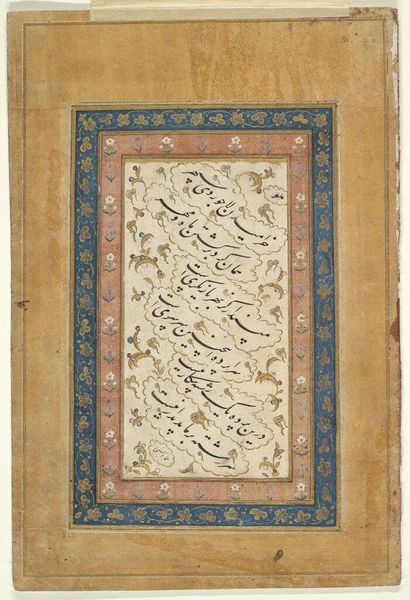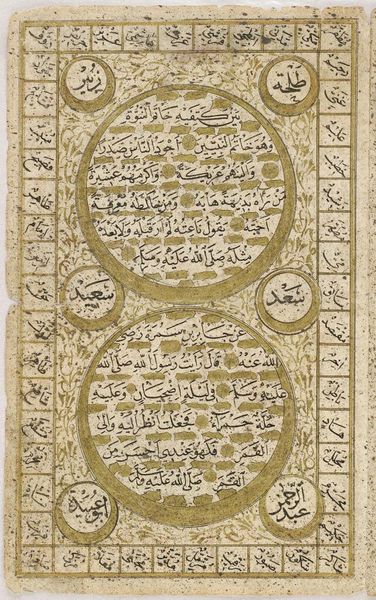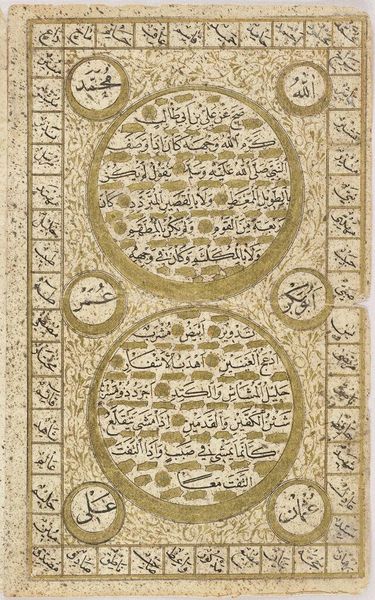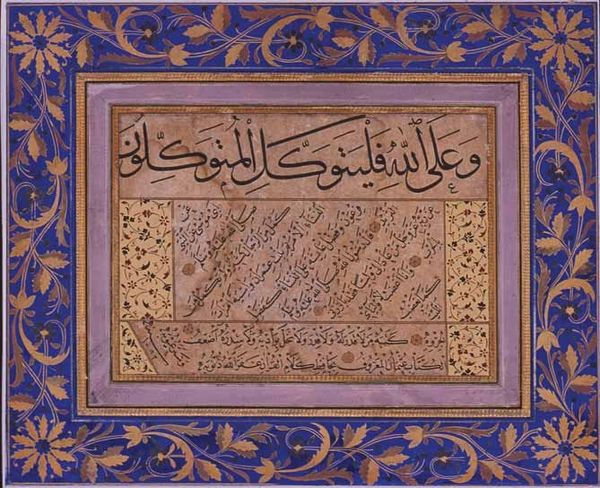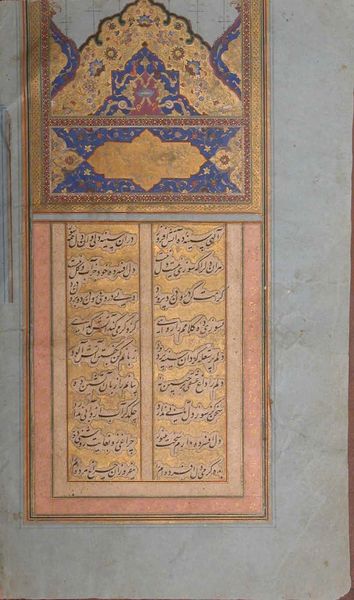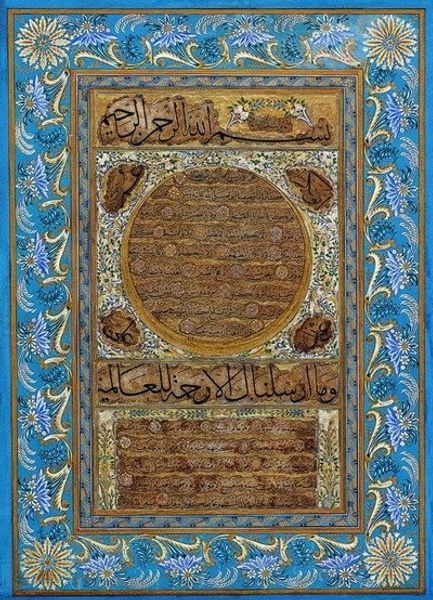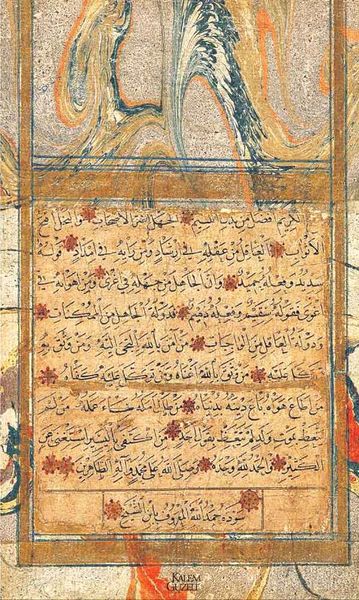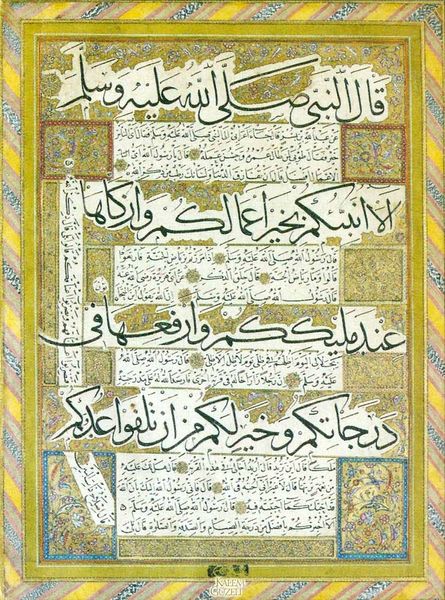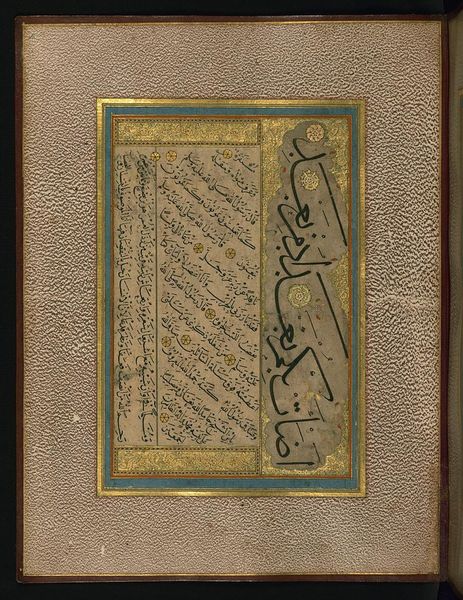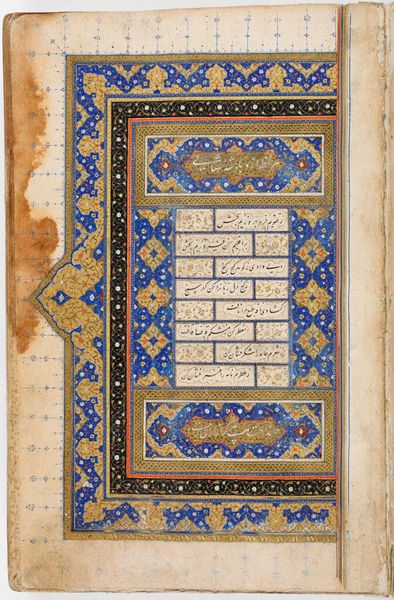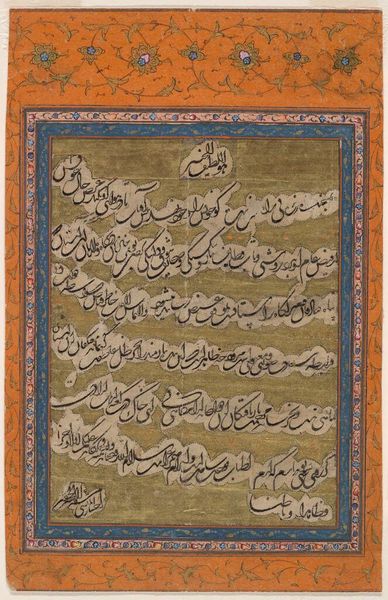
paper, ink
#
natural stone pattern
#
naturalistic pattern
#
paper
#
ink
#
repetitive shape and pattern
#
ethnic pattern
#
geometric
#
repetition of pattern
#
vertical pattern
#
wooden texture
#
intricate pattern
#
pattern repetition
#
islamic-art
#
decorative-art
#
layered pattern
#
miniature
#
calligraphy
Copyright: Public domain
This ornamental calligraphy was created by Sheikh Hamdullah, a master of Ottoman calligraphy who died in 1520. The central symbol here is not a single image, but the very act of writing itself. Calligraphy, particularly in Islamic art, transcends mere transcription. It embodies the divine word and becomes an act of devotion. Notice how the fluid, elongated letters create a visual rhythm, almost a dance across the page. This echoes a deeper human impulse: to give form to the intangible, to capture the essence of thought through symbolic representation. Consider, too, the intricate borders. These geometric patterns, reminiscent of ancient cosmological diagrams, serve as a frame, a sacred space within which the divine word unfolds. We see echoes of this impulse in medieval illuminated manuscripts, where borders teem with symbolic flora and fauna, a testament to the interconnectedness of all things. The power of the written word, imbued with cultural and religious significance, engages us on a subconscious level. It stirs within us the deep-seated human desire to connect with the transcendent, to find meaning in the intricate tapestry of existence. This is not merely text, but a visual manifestation of a timeless spiritual quest, resurfacing and evolving through human history.
Comments
No comments
Be the first to comment and join the conversation on the ultimate creative platform.


